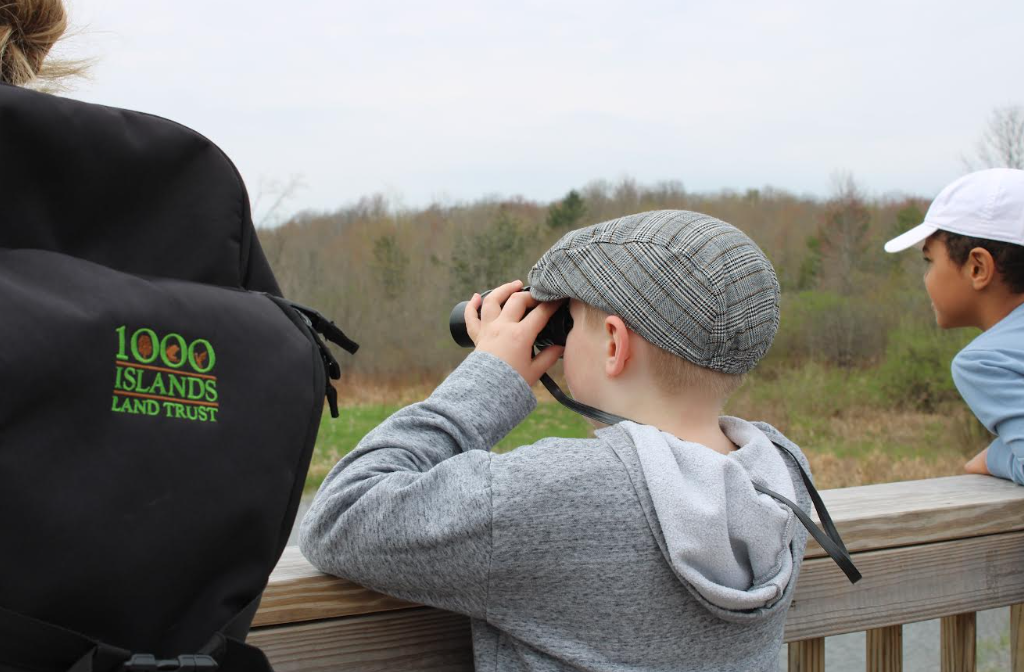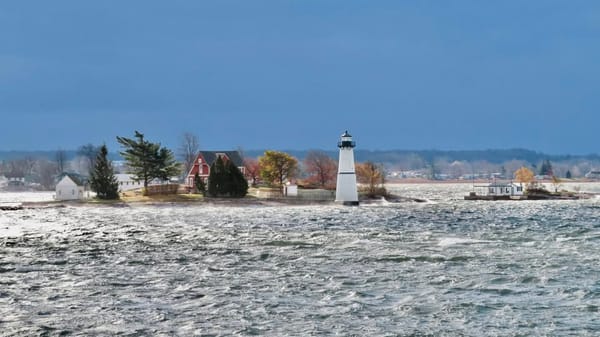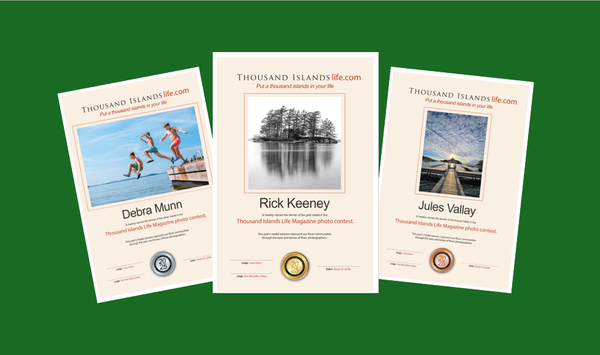Connecting the Dots from Desks to Dirt
by: Bridgett McCann
It started with a Skittle.
Not the most traditional way to explain erosion, but for a group of curious local students that tiny rainbow candy dissolving in water became a vibrant metaphor for the natural forces that shape our landscape, and for the kind of learning that resonates.
This moment of realization was part of the Conservation Connections environmental education program, a Thousand Islands Land Trust (TILT) initiative, which blends science, nature, and exploration into one joyful, muddy, experience for young learners.
More than just a classroom lesson and a fun day outside, the program bridges classroom curriculum with real-world environmental understanding—reinforcing concepts in earth science, ecology, and sustainability through direct observation and experience. Students aren’t just learning about erosion, ecosystems, and native species—they’re seeing these ideas come to life out on the land, forming lasting academic and personal connections to the natural world around them.
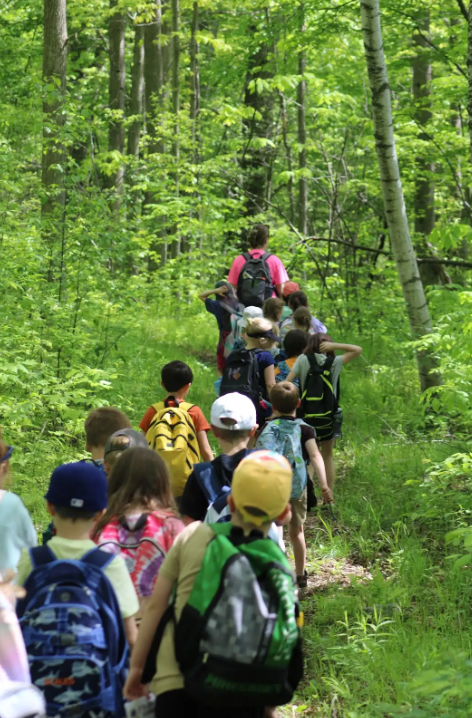
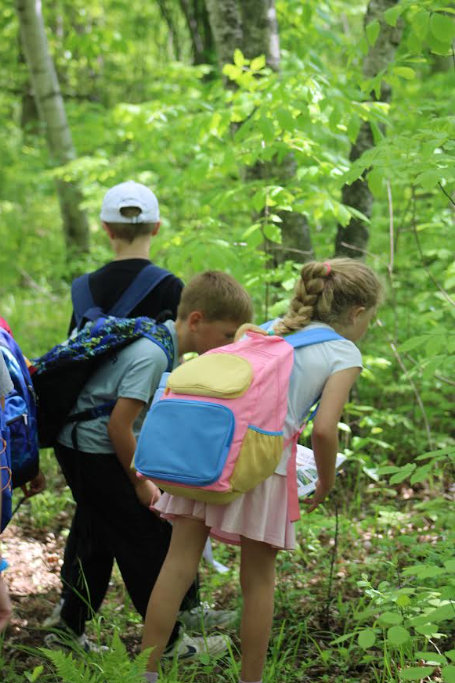
Students take part in a hands-on scavenger hunt at Otter Creek Preserve, identifying native species, spotting signs of erosion, and making connections between classroom lessons and the natural world. Photo Credit Bridgett McCann.]
From Candy to Creek Beds
The adventure begins indoors, where TILT’s environmental education team guides students through lessons on ecology, conservation, and the mission of protecting the lands and waters of the Thousand Islands region. But this isn’t a typical PowerPoint classroom lesson where students take notes, maybe yawn, or count down the minutes until it’s over. The classroom lesson is anything but ordinary—it’s a lively mix of hands-on activities, surprising experiments, and moments that make kids laugh out loud.
From the moment the session starts, students are invited to be active participants rather than passive listeners. Colorful props—like creating a model with Skittles and water to demonstrate erosion—catch their eyes and spark curiosity. Playful questions and quick games keep energy high, while silly comparisons and relatable stories make complex science concepts easy to grasp. Throughout, the instructor uses humor and enthusiasm to turn learning into an adventure, making even tricky topics feel fun and approachable. By blending creativity with clear explanations, the lesson draws kids in and holds their attention from start to finish, leaving them eager for the next step—taking what they’ve learned outdoors.
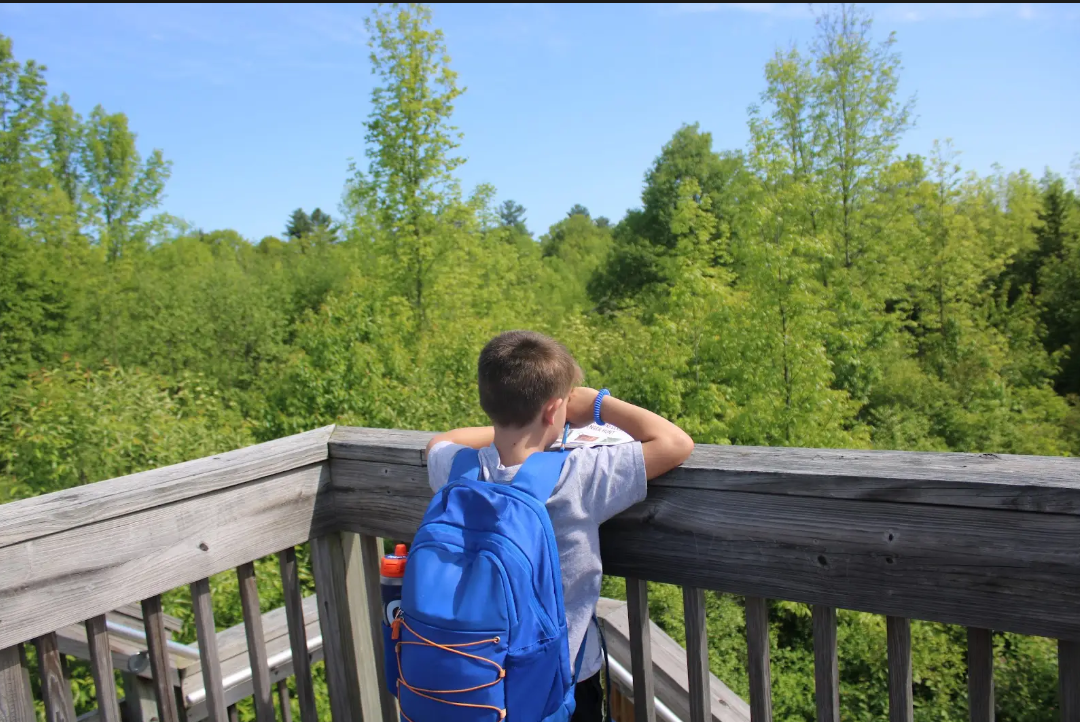
Nature as the Ultimate Classroom
The next day, the real fun begins. Trading desks for dirt trails, students head out to one of TILT’s Signature Preserves, where nature becomes the teacher and every moment is hands-on. Guided by TILT staff, including the ever-enthusiastic Community Engagement Coordinator, Delaney McIlrath, students embark on scavenger hunts, spot frogs, snakes, and any other wildlife along their path.
This adventure offers plenty of activity to match energetic youth, with experiences like identifying native and invasive species, exploring habitats, and wildlife spotting. Students participate in hunts, interactive games, and team challenges that build skills and deepen their connection to nature—all while staying active and curious.
“It’s always great to see students making connections between what they’ve learned in the classroom and what they’re seeing outside,” said Delaney. “Being out on the land helps make conservation feel more real and gives students a chance to ask questions, observe, and explore at their own pace.”
While visiting the Otter Creek Preserve for their field trip, the group paused at the Lynch Creek footbridge to observe erosion in action. In spring, creek levels rise with snow melt and sometimes flow over the trail – an up-close lesson in seasonal change. The conversations that followed linked classroom learning directly to real-world observations out on the land.
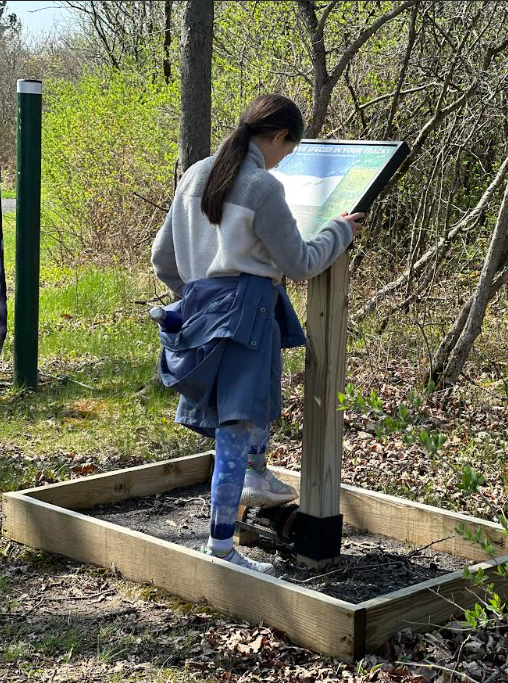
These field trips aren’t just a day in the sun (though there’s plenty of that, too). They’re rooted in place-based education, a growing movement that centers learning around the environment and culture of the local community. For TILT, that means creating opportunities for young people to engage with the unique landscapes of the North Country and to understand their role in caring for it.
“A child who can tell a native plant from an invasive plant grows up to care about the land and help protect these places we love,” said Terra Bach, Director of Development and Communications at TILT. “That’s what Conservation Connections is all about—planting those seeds early and fostering the next generation of environmental stewards.”
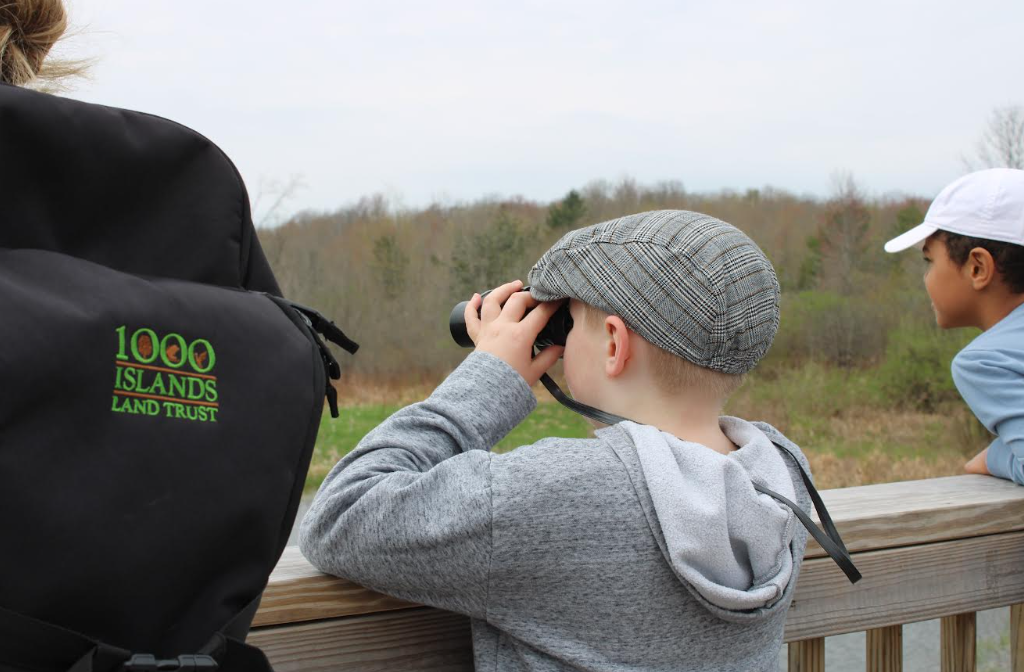
Beyond science, the program taps into something deeper. Time spent outdoors has been shown to boost mental health, improve focus, and reduce stress, especially in children. These outdoor experiences offer a space for discovery, movement, reflection, and joy—things that can sometimes be deficient in the standard classroom. One teacher from Guardino Elementary put it simply: “It’s so peaceful. The kids love it. And TILT takes care of it all!”
At the S. Gerald Ingerson Preserve, a local home-school group recently joined TILT for a Conservation Connections field trip, diving into ecology with muddy boots and wide, awe-filled eyes. As they wandered along the trail, students learned to spot invasive and native plants and explore the concept of ecological balance. Their walk led them to the old trestle bridge, where they paused—curious and observant—to watch the water flowing beneath their feet, surrounded by the gentle sounds of nature.
From kindergartners to middle schoolers, each Conservation Connections outing is tailored to the group. But the goals remain the same: spark wonder, deepen understanding, and create lasting relationships between young people and the land that surrounds and provides for them.
In today’s screen-filled world and short attention spans, the simple act of walking through the woods gives students the opportunity to slow down and ask simple but powerful questions like “What is that plant?” “Is it supposed to be here?” or “Where does this water go?” These small questions ignite big learning—and create lifelong connections to the natural world.
What’s Next?
As TILT celebrates 40 years of conservation in the region, the Conservation Connections program is growing. Educators are reaching out, which means more students are lacing up their hiking shoes, and more moments of connection—between ideas and ecosystems—are unfolding on trails and forest floors.
But this is more than just a growing program—it’s a movement. With each field trip, each child who pauses to listen to songbirds, or who marvels at a frog beneath the brush, we’re nurturing a future grounded in stewardship. Conservation Connections is helping to cultivate a generation that will not only understand the value of nature but will be equipped—and inspired—to protect it.
If you’re an educator or home-school parent, the Land Trust welcomes you to join the adventure. Because sometimes, it only takes one walk in the woods—one dissolving Skittle—to change the way a young person sees the world.
To learn more about Conservation Connections or to schedule a field trip, contact Delaney McIlrath dmcilrath@tilandtrust.org. Also, explore TILT’s work and Preserves at tilandtrust.org.
By Bridgett McCann, Thousand Islands Land Trust, Clayton, NY.
Bridgett McCann recently joined TILT as Communications Specialist. She is a graduate of St. Lawrence University with a Bachelor of Arts (B.A.) degree in Government and Environmental Studies, As a copy editor with experience communicating about conservation topics, she looks forward to making a positive impact in the Thousand Islands region, a place close to her heart. Originally from Rochester NY, Bridgett spent many summers in the Thousand Islands. Outside of professional pursuits, she enjoys spending quality time outdoors and on the River with her family, friends, and two rambunctious black labs River and Rosie.



